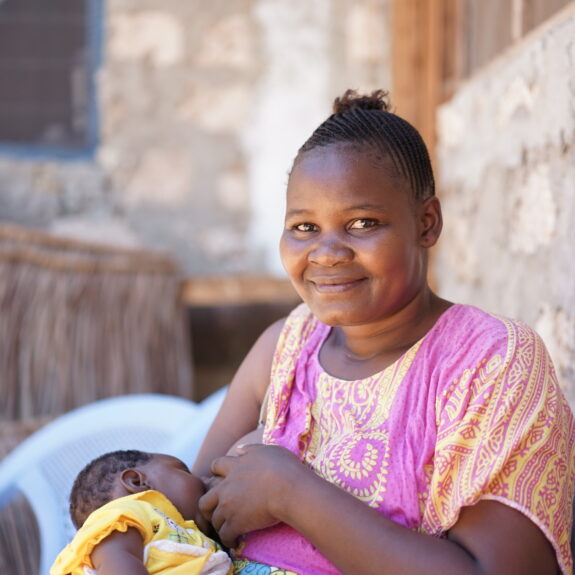Not on Our Watch: Uniting to end preventable deaths of mothers and children. – Partnership for Maternal, Newborn and Child Health

Report on the High-Level Event: Accelerating Progress on Maternal, Newborn, and Child Survival
Executive Summary
A high-level event convened by the Global Leaders Network for Women’s, Children’s and Adolescents’ Health (GLN) during the 2025 High-Level Political Forum (HPLF) issued an urgent call to action to end preventable maternal and child deaths. Co-organized with the Governments of South Africa and Nigeria and key global health partners, the event, themed “Accelerating Progress on Maternal, Newborn, and Child Survival: Political Leadership and Evidence-Based Solutions,” underscored that achieving the Sustainable Development Goals (SDGs) is contingent upon prioritizing the survival and well-being of women, children, and adolescents. The consensus was that while effective interventions exist, political leadership and country-led action are critically needed to implement them at scale.
Direct Alignment with Sustainable Development Goals (SDGs)
The event’s agenda and outcomes were intrinsically linked to the 2030 Agenda for Sustainable Development, with a primary focus on several key goals:
- SDG 3 (Good Health and Well-being): The core focus was on accelerating progress towards Target 3.1 (reduce maternal mortality) and Target 3.2 (end preventable deaths of newborns and children under five). Discussions also covered Target 3.7 (universal access to sexual and reproductive health) and Target 3.8 (universal health coverage).
- SDG 5 (Gender Equality): Speakers highlighted how entrenched gender norms and misinformation directly endanger the health of women and girls, making gender equality a prerequisite for health outcomes.
- SDG 10 (Reduced Inequalities): A significant theme was the need to address disparities by delivering solutions to underserved regions and ensuring equitable access to care for all populations.
- SDG 16 (Peace, Justice and Strong Institutions): The call for sustained political leadership, domestic financing reforms, and robust accountability mechanisms reflects the need for strong institutions to drive health progress.
- SDG 17 (Partnerships for the Goals): The event itself was a model of multi-stakeholder collaboration, and speakers repeatedly called for enhanced cross-sector partnerships between governments, civil society, and the private sector to achieve shared objectives.
Identified Barriers and Evidence-Based Solutions
Despite global challenges such as climate shocks, conflict, and economic instability, participants affirmed that the primary obstacle is not a lack of solutions but a failure of political will. UNICEF Executive Director Catherine Russell stated, “The interventions are simple, proven and cost-effective.”
Key Barriers Highlighted by Frontline Advocates:
- Harmful traditional practices and deep-rooted socio-cultural norms that impede access to care.
- The spread of misinformation regarding women’s and children’s health.
- A lack of trained healthcare providers and accessible services in underserved regions.
- Insufficient inclusion of youth voices, like those from Iraq, Burkina Faso, and South Africa, in policy and SDG review processes.
Political Leadership and National Commitments Towards the SDGs
Country representatives demonstrated political leadership by outlining national strategies aligned with the SDGs.
South Africa:
- Scaling up prenatal and postnatal services.
- Integrating sexual and reproductive health into the primary healthcare system.
- Expanding access to family planning to advance SDG 3 and SDG 5.
- Amplifying community voices in political decision-making.
Nigeria:
- Implementing domestic financing reforms to ensure sustainable funding for health in the face of declining external aid.
- Strengthening public resource allocation for primary healthcare.
- Making high-impact investments in emergency transport, immunization, and workforce training to build a resilient health system.
A Call for Strategic Investment and Partnership
The economic case for investment was strongly made. UNICEF Regional Ambassador Tendai Mtawarira noted, “Failing to invest in their health and rights is not just a moral failure, it’s an economic one,” warning that the cost of inaction could be eight to nine times higher than the required investment. This reinforces the link between health (SDG 3) and economic growth (SDG 8).
PMNCH 2026-2030 Strategy
The Partnership for Maternal, Newborn and Child Health (PMNCH) launched its new strategy for 2026-2030, citing sobering 2023 statistics—4.8 million under-five deaths, 1.9 million stillbirths, and 260,000 maternal deaths—as evidence of a systemic “policy failure, a funding failure and above all, a failure of will.” The strategy is built on four pillars essential for SDG progress:
- Political leadership
- Sustainable financing
- Data and accountability
- People-centered, inclusive solutions
Conclusion: The Time to Act is Now
With the 2030 deadline for the SDGs rapidly approaching, the event concluded with a unified message: immediate, decisive, and sustained action is non-negotiable. The preventable deaths of women and children represent a fundamental failure to uphold human rights and a critical barrier to achieving sustainable development. The global community was urged to mobilize political will and resources to ensure that no mother or child is left behind.
Analysis of Sustainable Development Goals in the Article
-
Which SDGs are addressed or connected to the issues highlighted in the article?
-
SDG 3: Good Health and Well-being
The article is fundamentally centered on health, with its primary focus on the “preventable deaths of mothers and children.” The event’s theme, “Accelerating Progress on Maternal, Newborn, and Child Survival,” and the repeated calls to action to save lives directly align with the core objectives of SDG 3.
-
SDG 5: Gender Equality
The article connects maternal and child health to gender issues. A youth advocate from Iraq is quoted describing how “entrenched gender norms, misinformation and lack of access continue to put women’s and girls’ lives at risk.” This highlights the link between gender inequality, harmful practices, and poor health outcomes for women, which is a key concern of SDG 5.
-
SDG 17: Partnerships for the Goals
The article emphasizes the importance of collaboration and resource mobilization. It describes the event as a collective effort “co-organized with the Governments of South Africa and Nigeria, alongside PMNCH, UNICEF, UNFPA, EWENE, Child Survival Action and WHO.” Furthermore, it discusses financing challenges, such as “declining external aid,” and solutions like Nigeria’s “domestic financing reforms,” which are central themes of SDG 17.
-
-
What specific targets under those SDGs can be identified based on the article’s content?
-
Target 3.1: By 2030, reduce the global maternal mortality ratio to less than 70 per 100,000 live births.
This target is directly addressed through the article’s urgent call to “end the preventable deaths of mothers” and the specific mention of “260,000 maternal deaths” in 2023, which underscores the need for action.
-
Target 3.2: By 2030, end preventable deaths of newborns and children under 5 years of age.
The article’s main theme is “Maternal, Newborn, and Child Survival.” It explicitly cites statistics of “4.8 million under-five deaths” and “1.9 million stillbirths,” directly aligning with the goal of this target.
-
Target 3.7: By 2030, ensure universal access to sexual and reproductive health-care services, including for family planning, information and education.
This is identified through the example of South Africa, which shared its experience in “scaling up prenatal and postnatal services, integrating sexual and reproductive health into primary health care and expanding access to family planning.”
-
Target 5.3: Eliminate all harmful practices, such as child, early and forced marriage and female genital mutilation.
This target is implied by the youth advocate from Iraq who pointed to the “impact of harmful traditional practices” and “deep-rooted socio-cultural norms” as factors that put women’s and girls’ lives at risk.
-
Target 17.1: Strengthen domestic resource mobilization, including through international support to developing countries, to improve domestic capacity for tax and other revenue collection.
This target is reflected in the section on Nigeria’s response to “declining external aid,” which includes “domestic financing reforms, championed by His Excellency Bola Ahmed Tinubu… including strengthened tax collection and more effective public resource allocation.”
-
Target 17.17: Encourage and promote effective public, public-private and civil society partnerships.
The article showcases this target in action. The event itself was a partnership between governments and multiple global organizations. The call for “cross-sector partnerships to invest in health, nutrition and supportive workplaces” further reinforces this target.
-
-
Are there any indicators mentioned or implied in the article that can be used to measure progress towards the identified targets?
-
Indicator 3.1.1: Maternal mortality ratio.
The article provides a direct data point for this indicator by citing “260,000 maternal deaths” in 2023. This figure is used to highlight the scale of the problem and the failure to prioritize maternal survival.
-
Indicator 3.2.1: Under-five mortality rate.
Progress towards this indicator is measured by the statistic of “4.8 million under-five deaths” in 2023, which is presented as evidence of a “systemic failure to prioritize survival.”
-
Indicator 3.2.2: Neonatal mortality rate.
While not a direct measure, the mention of “1.9 million stillbirths” is a closely related metric that points to the challenges in newborn survival and the need for better prenatal and neonatal care.
-
Indicator 17.1.1: Total government revenue as a proportion of GDP, by source.
This indicator is implied by Nigeria’s strategy to counter declining aid through “strengthened tax collection and more effective public resource allocation,” which are key components of domestic resource mobilization.
-
-
Create a table with three columns titled ‘SDGs, Targets and Indicators” to present the findings from analyzing the article.
SDGs Targets Indicators SDG 3: Good Health and Well-being 3.1: Reduce global maternal mortality. 3.2: End preventable deaths of newborns and children under 5.
3.7: Ensure universal access to sexual and reproductive health-care services.
3.1.1 (Maternal mortality ratio): Mentioned as “260,000 maternal deaths.” 3.2.1 (Under-five mortality rate): Mentioned as “4.8 million under-five deaths.”
3.2.2 (Neonatal mortality rate): Implied by the statistic of “1.9 million stillbirths.”
SDG 5: Gender Equality 5.3: Eliminate all harmful practices. Implied by the reference to “harmful traditional practices” and “deep-rooted socio-cultural norms” affecting women and girls. SDG 17: Partnerships for the Goals 17.1: Strengthen domestic resource mobilization. 17.17: Encourage and promote effective public, public-private and civil society partnerships.
17.1.1 (Total government revenue as a proportion of GDP): Implied by Nigeria’s focus on “strengthened tax collection.” Implied by the collaborative nature of the event and the call for “cross-sector partnerships.”
Source: pmnch.who.int

What is Your Reaction?
 Like
0
Like
0
 Dislike
0
Dislike
0
 Love
0
Love
0
 Funny
0
Funny
0
 Angry
0
Angry
0
 Sad
0
Sad
0
 Wow
0
Wow
0












































































